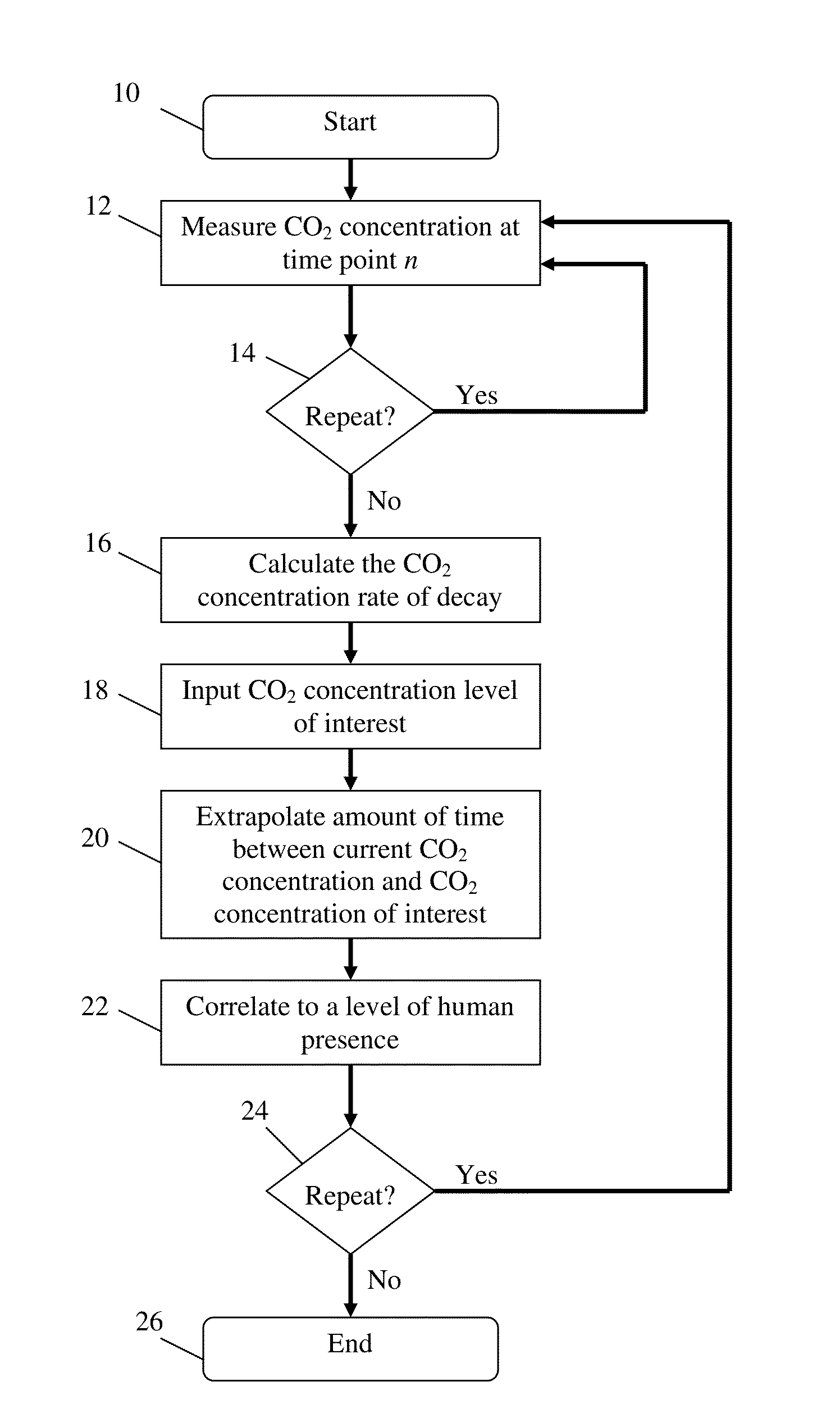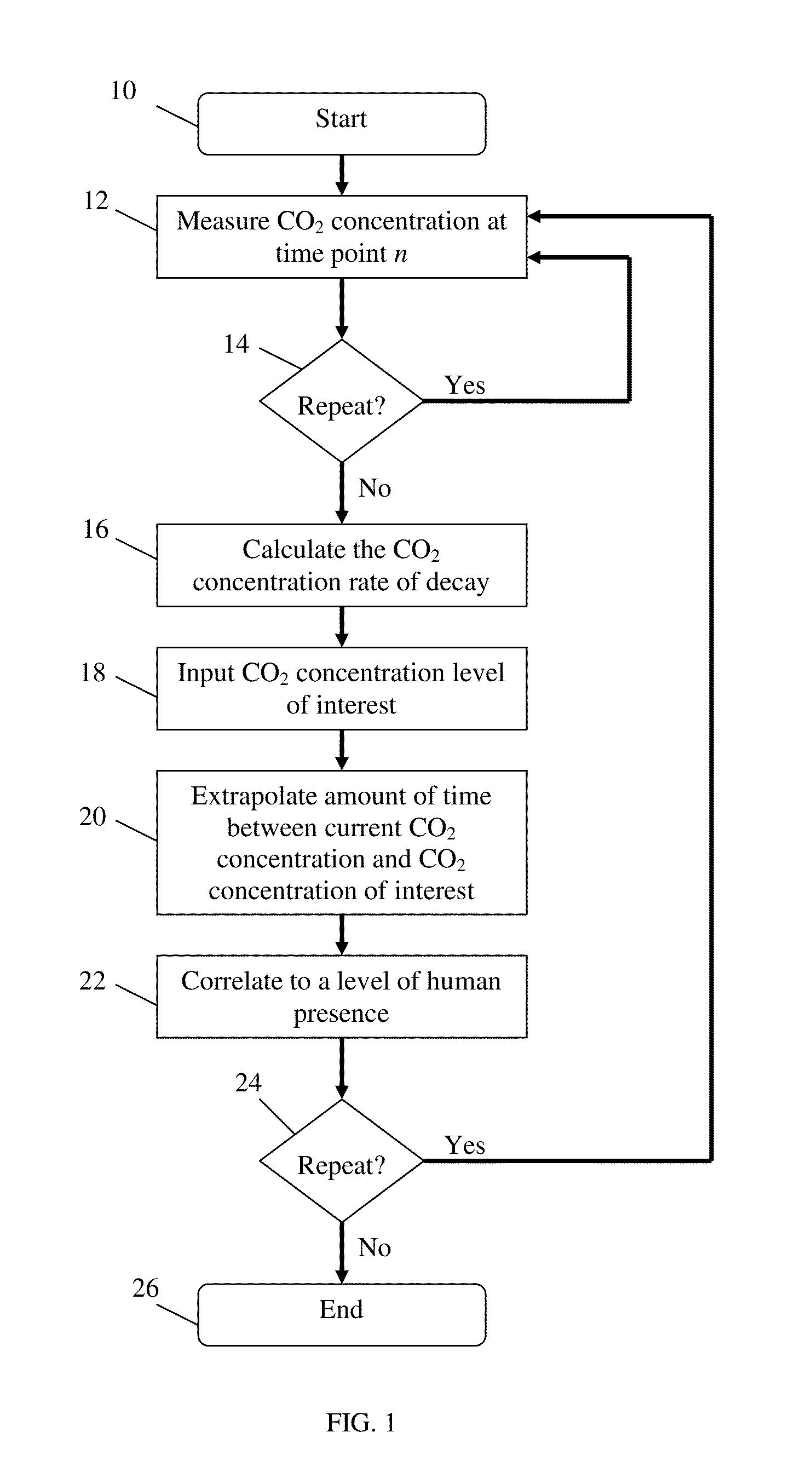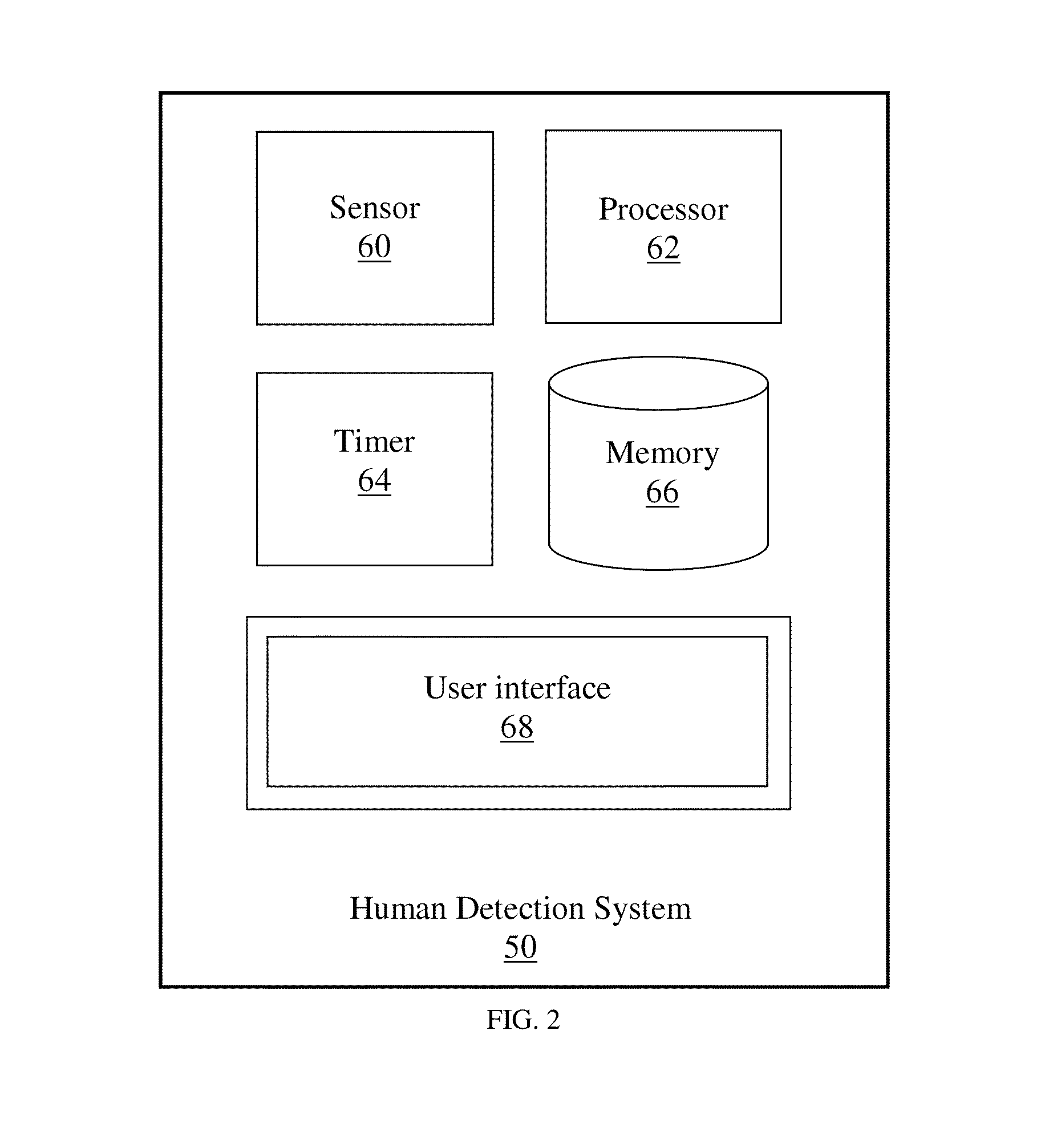Method And System For Human Presence Correlation Using Carbon Dioxide
a technology of human presence and carbon dioxide, applied in chemical methods analysis, instruments, alarms, etc., can solve the problems of system failure to function in space or environment, and system failure to detect recent human presen
- Summary
- Abstract
- Description
- Claims
- Application Information
AI Technical Summary
Benefits of technology
Problems solved by technology
Method used
Image
Examples
Embodiment Construction
[0018]Referring now to the drawings, wherein like reference numerals refer to like parts throughout, there is seen in FIG. 1 a flowchart of the human detection method according to one embodiment of the present invention.
[0019]The process begins at step 10 in some defined space 100 (not shown). Space 100 can be any partially or completely enclosed environment such as a car, room, house, office, building, or any other structure or natural space capable of sustaining a temporary rise in carbon dioxide (“CO2”) levels in response to human presence. Preferably defined space 100 has recently contained one or more human beings, especially at some point within the previous 2 hours. However, since the goal of the systems and methods described herein is to determine whether one or more human beings were recently within space 100, it is not necessary that the space contain recent human activity.
[0020]At step 12, the initial concentration of CO2 in space 100 is measured. There are many different...
PUM
 Login to View More
Login to View More Abstract
Description
Claims
Application Information
 Login to View More
Login to View More - R&D
- Intellectual Property
- Life Sciences
- Materials
- Tech Scout
- Unparalleled Data Quality
- Higher Quality Content
- 60% Fewer Hallucinations
Browse by: Latest US Patents, China's latest patents, Technical Efficacy Thesaurus, Application Domain, Technology Topic, Popular Technical Reports.
© 2025 PatSnap. All rights reserved.Legal|Privacy policy|Modern Slavery Act Transparency Statement|Sitemap|About US| Contact US: help@patsnap.com



